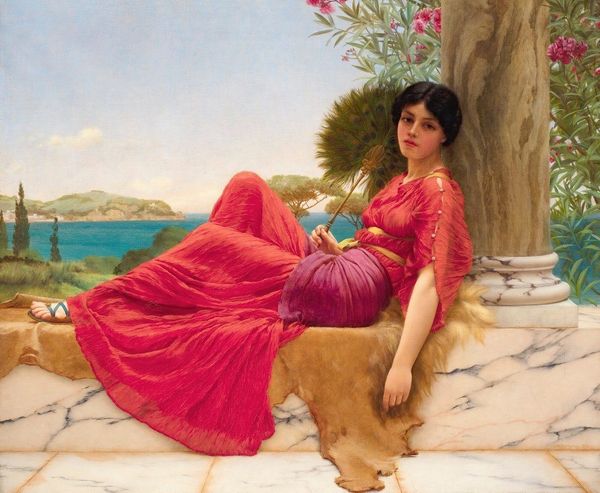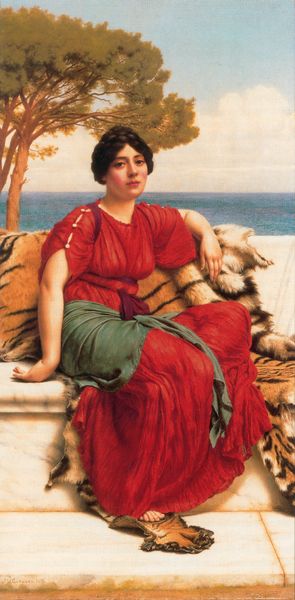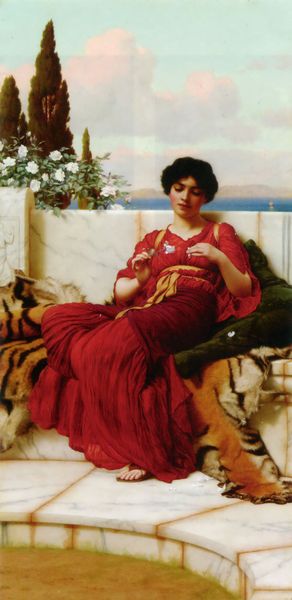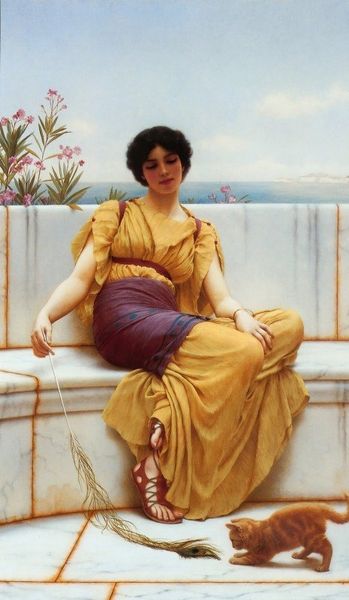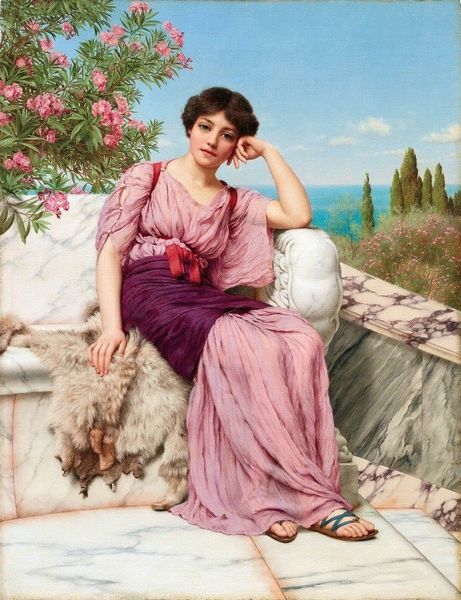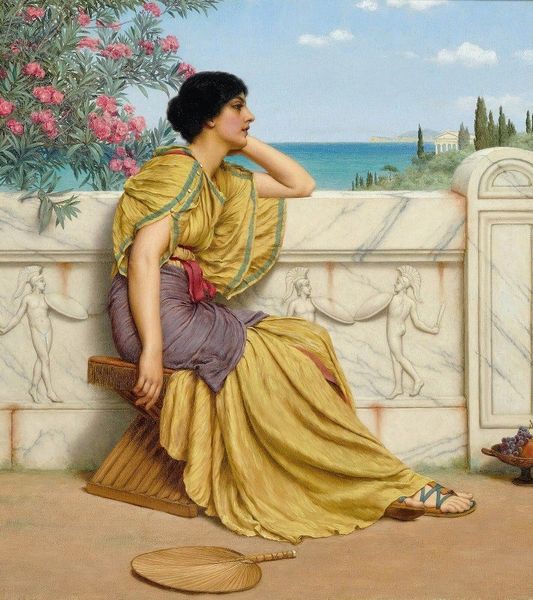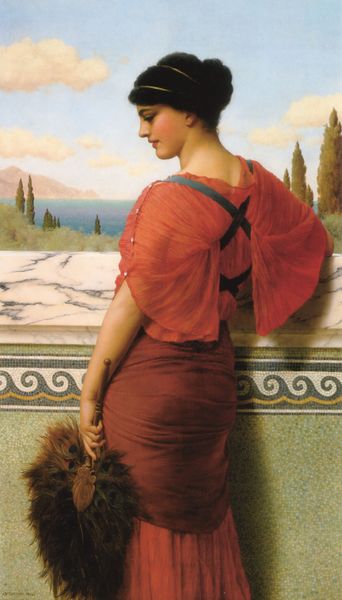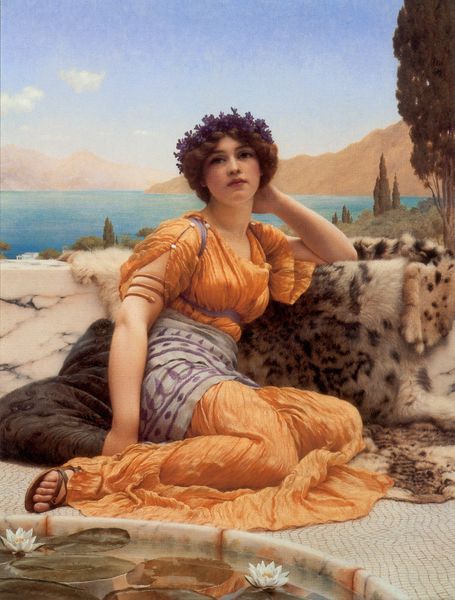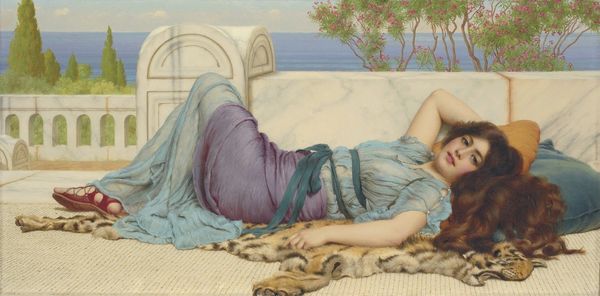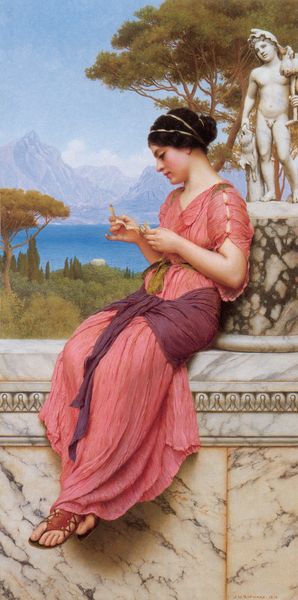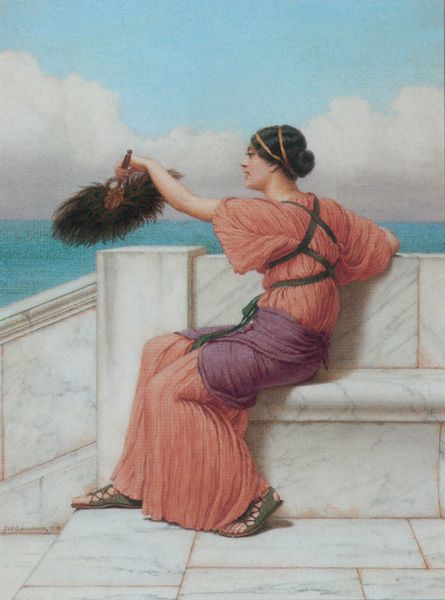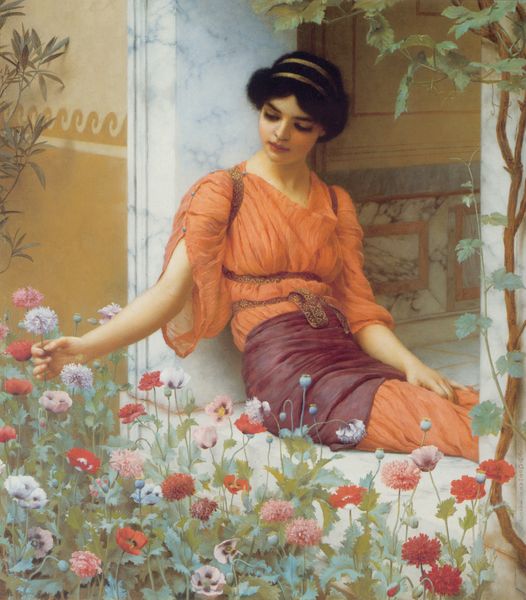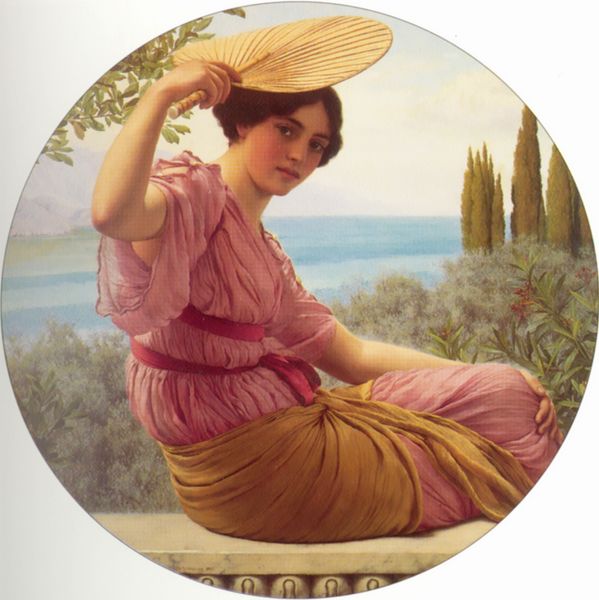
Copyright: Public domain
Editor: So, this is “Flabellifera,” painted in 1905 by John William Godward. It looks like it's oil paint on canvas, and I'm struck by the romantic atmosphere and the way the bright reds contrast with the tranquil background. What sort of reading can we give to an image like this? Curator: Notice how Godward deploys symbols. Consider the peacock fan—or flabellum—that gives the piece its title. In Roman art, the peacock was heavily associated with Juno, goddess of marriage and women. It came to signify renewal and immortality, then vanity and pride. Which of these symbolic associations do you think is most highlighted in Godward's painting? Editor: Hmmm… given her rather listless gaze, I wouldn't say pride. Maybe it's drawing on the theme of female beauty and its ephemeral nature. She's lovely, but almost melancholy. Curator: Exactly. The flabellum can suggest both her beauty and her mortality, right? Note also the pink oleander, another symbol that mixes celebration of beauty with danger because of its toxicity. The composition leads us to an important tension. How do we reconcile classical ideals with an acknowledgement of mortality and imperfection? Editor: That’s fascinating. The visual language is a lot more complex than I initially thought, creating this really compelling contradiction of beauty and mortality. Curator: These pre-WWI painters tapped into deeply-held associations we often don't consciously recognize today. The appeal and enduring presence of classicism speak to deep and persistent needs, long before Freud. Editor: I hadn't considered all those layers of symbolism. I will definitely view other works from that period through a different lens from now on. Curator: The classical world provides so many frameworks. Every artifact and image carries an opportunity to see meaning anew, to question continuity in culture, memory and feeling.
Comments
No comments
Be the first to comment and join the conversation on the ultimate creative platform.
